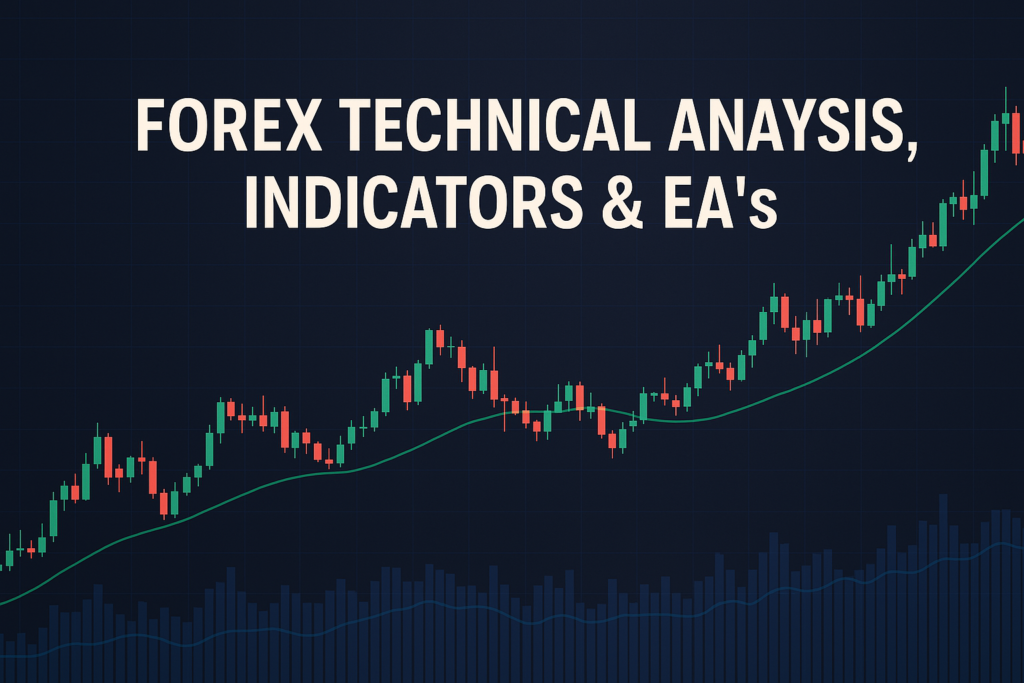
Guppy Multiple Moving Average is a trading tool that helps identify trends and make informed decisions in Forex trading.
The Guppy Multiple Moving Average (GMMA) is a powerful tool in Forex trading. Traders use it to analyze price trends and identify potential entry and exit points. The GMMA combines multiple moving averages to give a clearer picture of market momentum. By smoothing out price fluctuations, it helps traders make informed decisions in a fast-paced environment.
However, many traders, both beginners and professionals, struggle with using the GMMA effectively. They often find themselves overwhelmed by the various types and settings. Without a solid understanding, it’s easy to misinterpret signals and make costly mistakes. Thus, grasping the GMMA’s ins and outs is essential for successful trading.
This article will dive into the GMMA, covering its history, advantages, disadvantages, and practical applications. You will learn how to implement it in your trading strategy and discover effective techniques to maximize your profits.
In Forex trading, “slippage” refers to the difference between the expected price of a trade and the actual price at which the trade is executed. This can happen, especially during times of high volatility. To learn more about slippage, check out this article on Slippage.
What is a Guppy Multiple Moving Average?
The Guppy Multiple Moving Average (GMMA) is a combination of two sets of moving averages. These averages are calculated over different time periods. The purpose of these averages is to help traders identify trends more easily. Think of it like a roadmap for your trading journey. The GMMA shows you the direction of the market, helping you decide when to buy or sell.
Types of Guppy Multiple Moving Average
There are three main types of moving averages used in GMMA:
- Simple Moving Average (SMA): This is the average price over a specific number of periods.
- Exponential Moving Average (EMA): This gives more weight to recent prices, making it more responsive to new information.
- Weighted Moving Average (WMA): Similar to EMA but applies different weights to each price point based on its position.
How Guppy Multiple Moving Average Smooths Out Price Action
The GMMA uses multiple moving averages to smooth out price action. When prices are jumping up and down, the GMMA helps to filter out the noise. It shows the overall trend, making it easier for traders to see where the market is heading. Imagine walking through a dense forest; the GMMA acts as a clear path, guiding you in the right direction.
Common Periods Used and Why
Traders often use different periods for their moving averages. Common periods include 3, 5, 8, 10, 12, 15, and 20 days. Shorter periods react quickly to price changes, while longer periods provide a broader view of the trend. By combining these, traders can spot potential reversals and continuations in the market.
The History of Guppy Multiple Moving Average: How It Became Popular
Origin of Guppy Multiple Moving Average
The GMMA was developed by Australian trader Daryl Guppy in the early 2000s. He wanted to create a better way for traders to analyze price trends. His method combined multiple moving averages to provide a clearer picture of market momentum. Over time, the GMMA gained popularity among traders worldwide.
When Did Traders Start Using It Widely?
Traders began adopting the GMMA in the mid-2000s as they sought effective strategies in Forex trading. The simplicity and effectiveness of the GMMA made it a favorite among both beginners and experienced traders. It became essential for those looking to improve their trading strategies.
Real-Life Stories
Many professional traders have credited the GMMA for their success. For example, a trader named Sarah used the GMMA to identify a strong uptrend in the EUR/USD pair. She entered a buy position and rode the wave until the trend reversed, earning substantial profits. Stories like Sarah’s illustrate how the GMMA can lead to successful trading outcomes.
Advantages and Disadvantages of Guppy Multiple Moving Average
Advantages:
- Helps identify trends easily: The GMMA clearly shows upward or downward trends, making it easier for traders to make decisions.
- Useful for dynamic support and resistance: The moving averages act as support and resistance levels, guiding traders on when to enter or exit trades.
- Works well for crossover strategies: Traders can use crossover signals from the GMMA to make buy or sell decisions.
Disadvantages:
- Lags behind price movements: The GMMA is based on past prices, which means it may not react quickly to sudden market changes.
- Can give false signals in sideways markets: In choppy market conditions, the GMMA may produce misleading signals, leading to potential losses.
How to Apply Guppy Multiple Moving Average on MT4 & MT5
Step-by-Step Guide to Adding Guppy Multiple Moving Average on Charts
To add the GMMA on your MT4 or MT5 platform, follow these simple steps:
- Open your trading platform.
- Click on “Insert” in the menu.
- Select “Indicators,” then “Trend,” and finally “Moving Average.”
- Set the parameters for the GMMA and click “OK.”
Customizing Guppy Multiple Moving Average Settings
You can customize the GMMA settings to fit your trading style. Adjust the periods, colors, and types of moving averages to suit your preferences. For example, you might want to use a 3-period EMA for quick signals and a 15-period SMA for trend confirmation.
Saving Templates for Easy Application
Once you have customized your GMMA settings, consider saving them as a template. This way, you can quickly apply the same settings to other charts in the future, saving you time and effort.
5 to 7 Trading Strategies Using Only Guppy Multiple Moving Average
Strategy 1: All-Time Frame Strategy (M5 to D1)
This strategy works across various time frames. Monitor the GMMA for crossovers. When the short-term moving averages cross above the long-term ones, consider a buy signal. Conversely, a crossover below indicates a sell signal.
Strategy 2: Trending Strategies
In a trending market, use the GMMA to identify the direction. Stick to trades in the direction of the trend. For example, if the GMMA shows an uptrend, look for buying opportunities only.
Strategy 3: Counter Trade Strategies
Sometimes, the market moves against the trend. Use the GMMA to spot these opportunities. If the short-term averages drop below the long-term ones, consider selling, expecting a reversal.
Strategy 4: Swing Trades Strategies
For swing trading, combine the GMMA with support and resistance levels. Enter trades when the price approaches these levels and the GMMA confirms the momentum.
5 to 7 Trading Strategies Combining Guppy Multiple Moving Average with Other Indicators
Strategy 1: GMMA and RSI Combination
Combine GMMA with the Relative Strength Index (RSI) for better signals. When the GMMA gives a buy signal, check if the RSI is below 30. If so, it confirms a strong buy opportunity.
Strategy 2: GMMA and MACD
Using the GMMA alongside the Moving Average Convergence Divergence (MACD) indicator can enhance your trading decisions. When both indicators align, it’s a powerful confirmation for entering trades.
Strategy 3: GMMA and Bollinger Bands
Using GMMA with Bollinger Bands can help identify breakout opportunities. When the price touches the lower band and the GMMA aligns for a buy signal, it’s a strong setup.
Strategy 4: GMMA and Stochastic Oscillator
The Stochastic Oscillator can confirm GMMA signals. When the GMMA indicates a buy, check if the Stochastic is below 20. This combination can lead to profitable trades.
Additionally, if you’re facing challenges like broker preventing stop-loss adjustments on open trades, it’s important to know how to navigate these situations effectively.
Top 10 FAQs About Guppy Multiple Moving Average
1. What is the Guppy Multiple Moving Average?
The GMMA is a tool that combines multiple moving averages to identify market trends.
2. How do I set up the GMMA on my trading platform?
Simply insert the moving averages with your desired periods and colors.
3. What periods should I use for GMMA?
Common periods include 3, 5, 10, and 15 days for short-term trends, while longer periods like 20 days help with long-term analysis.
4. Can GMMA be used for day trading?
Yes, many day traders use GMMA for quick trades as it shows trends effectively.
5. Does GMMA work in all market conditions?
GMMA works best in trending markets and can give false signals in sideways markets.
6. How can I improve my GMMA trading strategy?
Combine GMMA with other indicators for better confirmation of signals.
7. How do I know when to exit a trade using GMMA?
Look for crossovers or when price moves against the trend indicated by GMMA.
8. Is GMMA suitable for beginners?
Yes, its visual representation of trends makes it beginner-friendly.
9. How accurate is GMMA?
Accuracy depends on market conditions; it’s best used with other confirmations.
10. Can I use GMMA on all currency pairs?
Yes, the GMMA can be applied to any currency pair, but consider the volatility of each pair.
Conclusion
In summary, the Guppy Multiple Moving Average is a valuable tool for traders looking to identify trends and make informed decisions. By understanding its advantages and disadvantages, you can effectively incorporate GMMA into your trading strategy. Remember to test strategies in a demo account before risking real money.
Keep practicing and refining your skills with GMMA. With time, you’ll become more confident in your trading decisions and improve your chances of success.
Get a broader view of this strategy with help from top sources MetaTrader, FRED (St. Louis Fed)
Expand Your Knowledge
- 📌 Forex Trading Learning Road Map
- 📌 Forex Trading Course with no Fees
- 📌 Forex Trading Issues, Problems, and Solutions
- 📌 Forex Daily Forecast & Live Updates
- 📌 Forex Fundamental & News Analysis: Tomorrow’s Market Movers & Trade Opportunities
- 📌 Forex Education Hub: Learn & Profit
- 📌 Forex Technical Analysis, Indicators & EA’s
Start Trading Today
Ready to take your forex trading to the next level? Open an account with Exness, one of the most trusted platforms in the industry. 👉 Sign Up Now and trade with confidence!
My recommended broker stands out with ultra-low spreads for beginners, instant withdrawals, and zero spread accounts for pro traders.
Trusted since 2008, lightning-fast execution, no hidden fees, and a secure, transparent trading environment—giving you the edge you need to succeed. 🚀
YouTube Video Library: Related Videos
Note: The video above is embedded from YouTube and is the property of its original creator. We do not own or take responsibility for the content or opinions expressed in the video.


